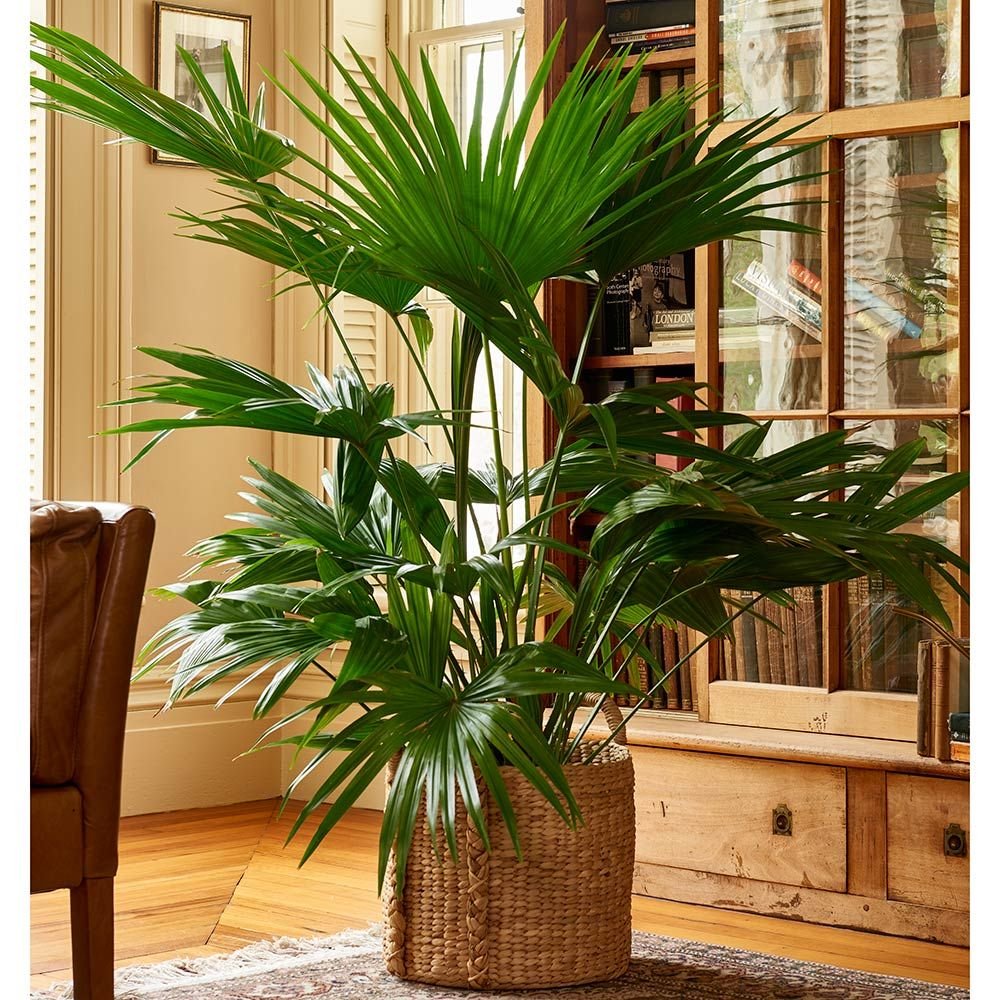The Chinese fan palm, scientifically known as Livistona chinensis, is a popular ornamental plant cherished for its aesthetic appeal and ease of maintenance. Native to East Asia, this palm has found its way into gardens, parks, and indoor spaces worldwide. This article delves into the Chinese fan palm’s characteristics, care requirements, and benefits, providing a comprehensive guide for plant enthusiasts.
Characteristics of the Chinese Fan Palm
The Chinese fan palm is named for its large, fan-shaped leaves that radiate from a central point. These leaves can grow three feet in diameter, creating a lush, tropical look. The palm’s trunk is slender and can reach heights of up to 50 feet in its natural habitat, although it tends to be much shorter when grown indoors or in garden settings.
Growth Rate
This palm is known for its slow to moderate growth rate. It can grow about 6-12 inches per year in optimal conditions. The slow growth rate makes it a manageable plant for indoor environments with limited space.
Flowers and Fruits
The Chinese fan palm produces small, yellowish flowers that bloom in clusters. These are followed by round, blue-black fruits that add to the plant’s ornamental value. While the flowers are not particularly showy, they contribute to the overall charm of the palm.
Care Requirements
The Chinese fan palm thrives in bright, indirect light. While it can tolerate some direct sunlight, especially in the morning, too much intense sunlight can scorch its leaves. Placing the palm near a north or east-facing window is ideal when grown indoors. If grown outdoors, partial shade is preferable.
Watering
This palm prefers consistently moist soil but is relatively drought-tolerant once established. Water the plant thoroughly when the top inch of soil feels dry. Overwatering can lead to root rot, so it is essential to ensure proper drainage. Reduce watering in the winter months when the plant’s growth slows down.
Soil
A well-draining potting mix is crucial for the Chinese fan palm. A blend for palms or general-purpose potting soil with added sand or perlite works well. Ensuring good drainage helps prevent waterlogging, which can harm the plant’s health.
Temperature and Humidity
The Chinese fan palm prefers warm temperatures ranging from 60°F to 85°F (15°C to 29°C). It is not frost-tolerant and should be protected from cold drafts and temperatures below 30°F (-1°C). This palm also thrives in moderate to high humidity. If indoor air is too dry, occasional misting or using a humidity tray can help maintain the necessary moisture levels.
Fertilization
Fertilize the Chinese fan palm during the growing season (spring and summer) with a balanced, water-soluble fertilizer. Feeding every 4-6 weeks provides essential nutrients that support healthy growth. Reduce or stop fertilizing in the fall and winter months when the plant’s growth naturally slows down.
Benefits of the Chinese Fan Palm
The Chinese fan palm’s striking foliage makes it popular for indoor and outdoor landscaping. Its large, fan-shaped leaves add a tropical touch to any space, creating a lush, green ambience that enhances the aesthetic appeal of gardens, patios, and interior decor.
Air Purification
Like many other houseplants, the Chinese fan palm can help improve indoor air quality. It has been shown to remove common toxins from the air, contributing to a healthier indoor environment. This makes it an excellent choice for homes and offices.
Low Maintenance
One of the key benefits of the Chinese fan palm is its low maintenance requirements. Its tolerance to light conditions and relative drought resistance make it an easy plant to care for, even for those who may not have a green thumb.
Versatility
The Chinese fan palm is versatile in its uses. It can be grown as a striking indoor houseplant, a patio plant, or an outdoor landscape feature in suitable climates. Its adaptability to different growing conditions makes it a favourite among gardeners and plant enthusiasts.
Common Problems and Solutions
Browning of the leaf tips can be a common issue with the Chinese fan palm. This is often caused by low humidity, underwatering, or exposure to cold drafts. Increasing humidity, adjusting watering practices, and protecting the plant from cold air can help resolve this problem.
Leaf Browning
The Chinese fan palm can be susceptible to common houseplant pests such as spider mites, scale, and mealybugs. Regularly inspecting the plant and treating any infestations with insecticidal soap or neem oil can help keep these pests at bay.
Root Rot
Root rot is a serious issue that arises from overwatering and poor drainage. Ensuring the soil is well-draining and allowing the top inch of soil to dry out between waterings can prevent root rot. If root rot is detected, it is essential to repot the plant in fresh, dry soil and remove any affected roots.
Conclusion
The Chinese fan palm (Livistona chinensis) is a versatile and attractive plant that can enhance any indoor or outdoor space with its tropical flair. Its low maintenance requirements and its air-purifying properties make it an ideal choice for novice and experienced gardeners. By providing the proper care in terms of light, water, soil, and temperature, you can enjoy the beauty and benefits of this magnificent palm for many years. For more information on caring for the Chinese fan palm and other houseplants, visit trusted horticultural websites or consult local gardening experts.

